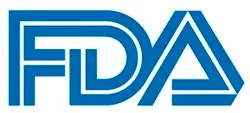News
Article
FDA Grants Orphan Drug Designation to Tebapivat for MDS
The FDA has granted orphan drug designation to tebapivat for the treatment of myelodysplastic syndromes.
FDA

The FDA has granted orphan drug designation to the novel pyruvate kinase (PK) activator tebapivat (AG-946) for the treatment of patients with myelodysplastic syndromes (MDS).1
The agent is currently being investigated in a phase 2 trial (NCT05490446) in patients with anemia due to lower-risk MDS. Previously reported data from the phase 2a portion of the study showed that of the patients with low transfusion burden (n = 10), 4 reached the study’s transfusion independence end point, defined as a transfusion-free interval of at least 8 consecutive weeks. Among all patients treated (n = 22), 1 patient had hemoglobin increase of at least 1.5 g/dL at week 16.2,3
“Receiving orphan drug designation for tebapivat in MDS underscores the importance of bringing new oral treatment options to patients suffering from this rare disease,” Sarah Gheuens, MD, PhD, chief medical officer and head of R&D at Agios Pharmaceuticals, stated in a news release.1 “We aim to deliver the first oral therapy that addresses anemia due to ineffective erythropoiesis in lower-risk MDS, which affects approximately 75,000 to 80,000 patients in the United States and European Union, and accounts for approximately 70% of MDS cases.”
The investigation of tebapivat will continue in the phase 2b portion of the study, which is currently being initiated.
Phase 2a Enrollment and Design
In the first portion of the phase 2 study, investigators enrolled patients at least 18 years of age with lower-risk MDS who were non-transfused or had low transfusion burden. Key inclusion criteria consisted of a hemoglobin concentration of less than 11.0 g/dL and an ECOG performance status of 2 or lower. If patients were receiving iron chelation, the dose was required to be stable and started at least 56 days prior to first study treatment.3
Patients were excluded from the phase 2a portion of the study if they had a history of acute myeloid leukemia; had secondary MDS; were previously exposed to a PK inhibitor or disease-modifying agents for MDS; were receiving treatment with erythropoiesis-stimulating agents (ESAs) plus granulocyte colony–stimulating factor or luspatercept-aamt (Reblozyl); had a history of active and/or uncontrolled cardiac or pulmonary disease within 6 months of enrollment; had hepatobiliary disorders; or had renal dysfunction.
All patients in the phase 2a portion of the study received oral tebapivat once per day for up to 16 weeks. Those who completed the 16-week treatment period were allowed to receive the same dose of the agent for up to 156 weeks during an extension period per investigator discretion.
The primary end points of phase 2a were hemoglobin response and transfusion independence. Secondary end points included safety, change in total transfused red blood cell (RBC) units during the 16-week treatment period, the proportion of patients to experience at least a 50% reduction in total transfused RBC units for at least 8 consecutive weeks, and pharmacokinetics.
The Continued Investigation of Tebapivat in Phase 2b
The phase 2b portion of the study will include patients at least 18 years of age with lower-risk MDS with low or high transfusion burden. Patients will be required to have a hemoglobin concentration of less than 10.0 g/DL at screening and an ECOG performance status of 0 to 2. Up to 2 prior therapies for MDS, including ESAs plus G-CSF or luspatercept monotherapy, are permitted. Iron chelation therapy is allowed if the dose is stable and begins at least 56 days prior to first study treatment.
Key exclusion criteria mirror the phase 2a portion of the study.
Patients in phase 2b will be assigned to 1 of 3 cohorts where tebapivat will be evaluated at 3 different dose levels. In all 3 cohorts, the agent will be administered once per day for up to 24 weeks, and those who complete the 24-week treatment period will be allowed to continue the agent for up to 156 weeks at investigator discretion.
The proportion of patients with transfusion independence for at least 8 consecutive weeks will serve as the primary end point in phase 2b. Secondary end points include safety; change in hemoglobin concentration; change in total RBC units transfused; the proportion of patients with at least a 50% reduction in transfused RBC units for at least 8 and 12 consecutive weeks; time to first transfusion independence for at least 8 and 12 weeks; and duration of transfusion independence.
References
- Agios announces FDA orphan drug designation granted to tebapivat (AG-946) for treatment of myelodysplastic syndromes (MDS). News release. Agios Pharmaceuticals. September 11, 2024. Accessed September 12, 2024. https://investor.agios.com/news-releases/news-release-details/agios-announces-fda-orphan-drug-designation-granted-tebapivat-ag
- Agios announces clinical proof-of-concept in phase 2a trial of AG-946 for the treatment of anemia in lower-risk myelodysplastic syndromes. News release. Agios Pharmaceuticals. November 20, 2023. Accessed September 12, 2024.
- A study of tebapivat (AG-946) in participants with anemia due to lower-risk myelodysplastic syndromes (LR-MDS). ClinicalTrials.gov. Updated August 7, 2024. Accessed September 12, 2024. https://clinicaltrials.gov/study/NCT05490446









